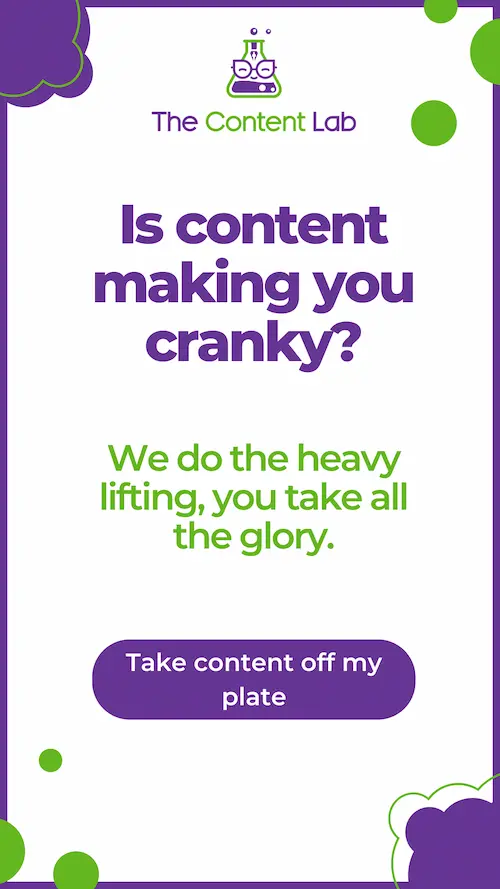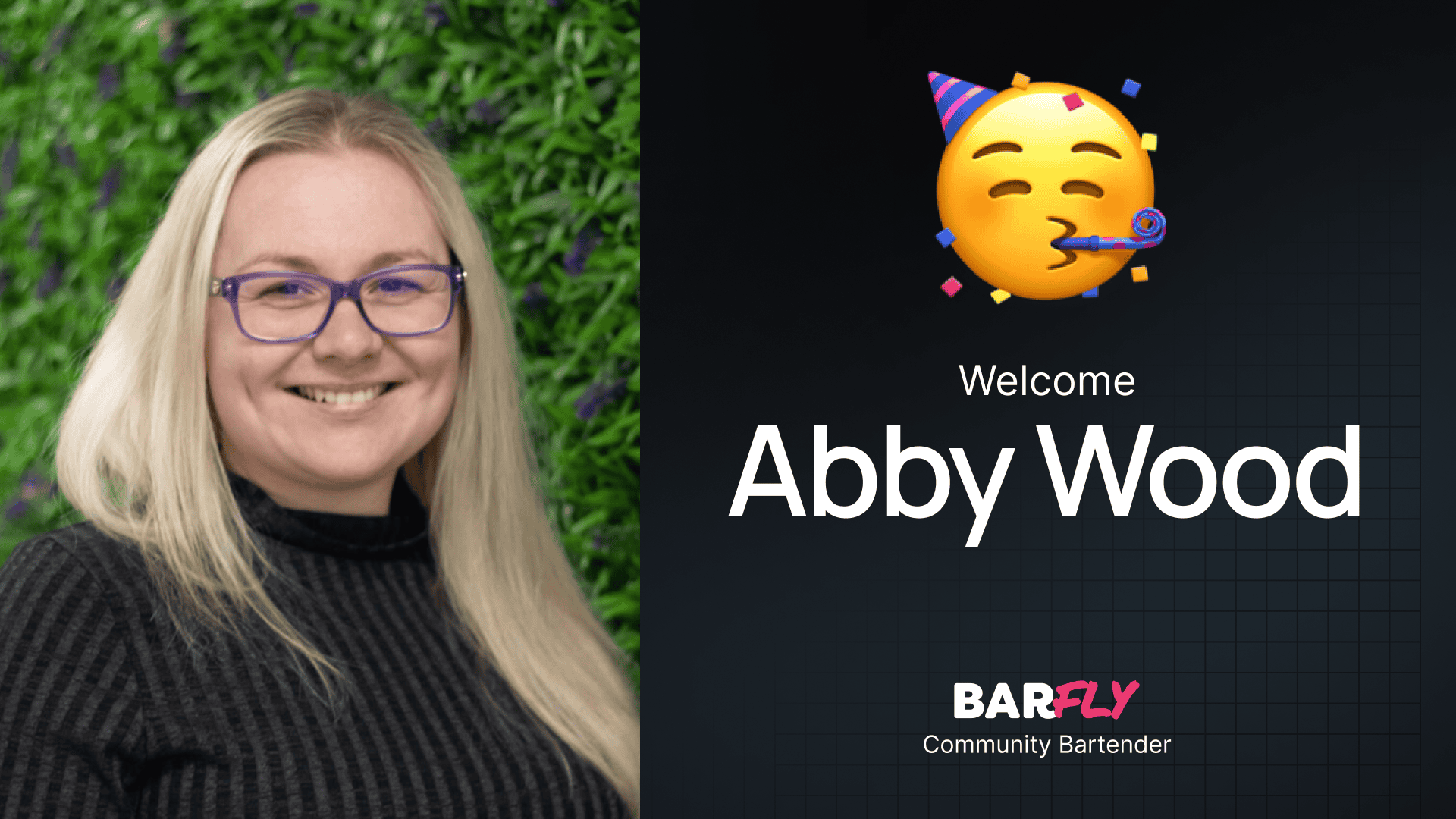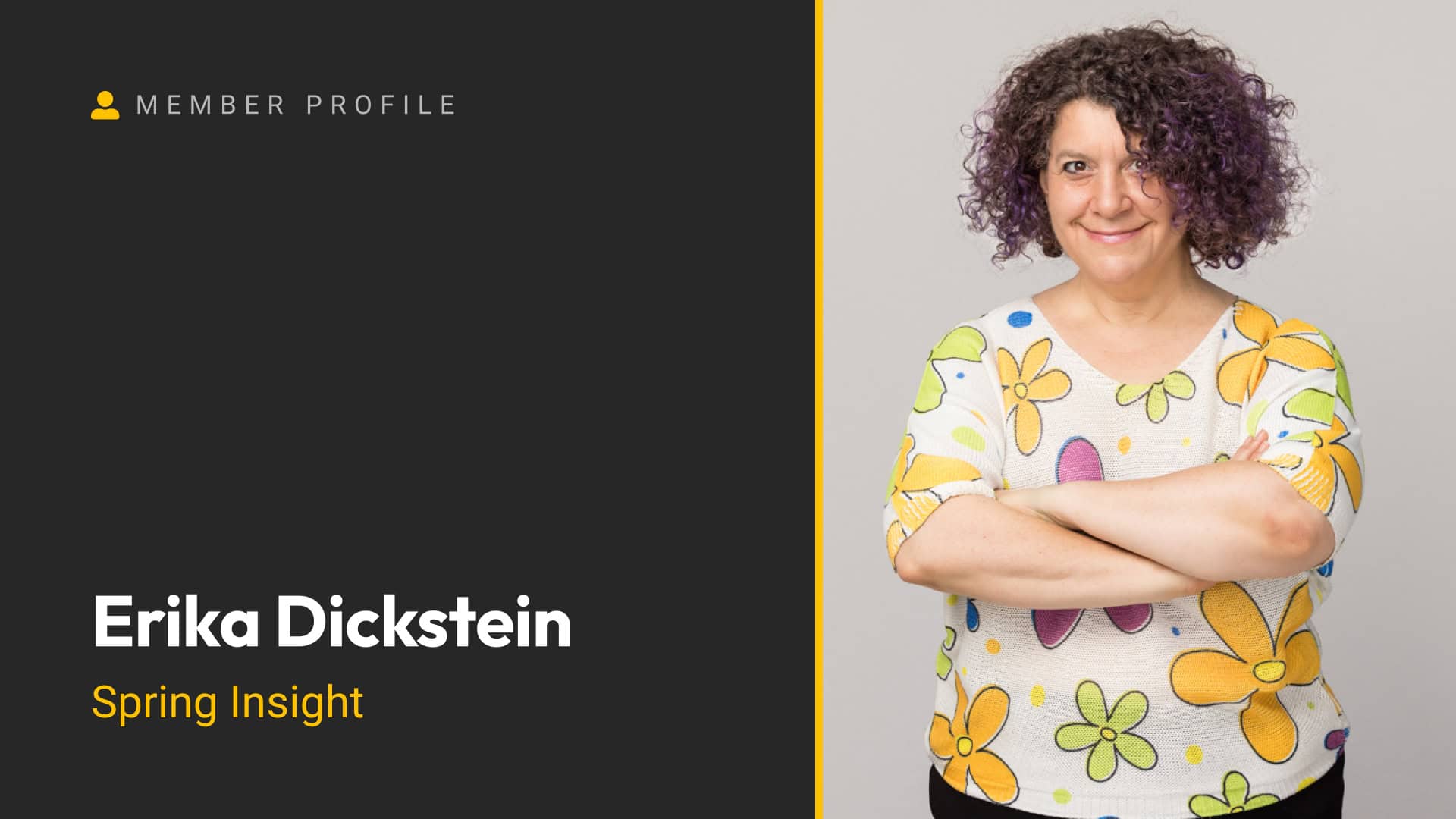We’ve all come across a website that feels like a sleazy salesman, desperately vying for attention. “OUR SERVICE IS THE BEST! LOOK AT ALL THESE FEATURES! BUY NOW!” There’s nothing that’ll make me click off a site faster than a pushy sales pitch.
There’s more to persuasive writing than filling your product pages with endless features or stuffing service pages with paragraph after paragraph about how great you are at what you do. It takes a balanced approach to write compelling web copy without trying to cram the sale down someone’s throat.
Sound tricky? It doesn’t have to be. From content marketing to website copywriting, I’ve got 6 simple persuasive writing strategies to help you strike the perfect balance between pushing and persuading in your web copy. Let’s get started!
1. Sell Solutions, Not Stuff
Ever been cornered at a party by someone who wouldn’t stop talking about themselves? You smile, you nod, – but your eyes are darting for the exit.

It’s the same with a company’s website copy that goes on and on about how incredible its products or services are. It gives off a very “me, me, me” vibe – and a one-way ticket to snooze town for visitors.
People don’t buy products – they buy solutions to their problems. It might sound obvious, but it’s true.
Take mops, for example. You don’t buy a new mop because you love mops (unless that’s your thing – no judgment!). You buy it because you want a clean floor and a tidy home and your old mop hurts your back.
Think about what you’re selling in the same way. When you’re writing content, put yourself in your customer’s shoes and imagine the issue they’re facing that your service could solve.
Effective website copywriting focuses on benefits – not features. Here are a few easy tricks you can use in your writing process to keep the spotlight right on target:
- Less ‘Us’, More ‘You’: Remember, it’s not about us or what we can offer; it’s about your target audience and what they need. Address them directly (with pronouns like ‘you’, ‘your’, ‘yours’) to keep them at the forefront of your copy.
- Hit Them Right in the Feels: Emotions are at the heart of persuasive writing. Get to the bottom of exactly how your service will make your customer feel, whether it’s happy, relieved, empowered, or motivated. Craft your copy to convey that emotion, and you’ll be well on your way to securing the sale.
- Ask yourself “why?”: If you’re struggling to think of a benefit, these three words can help you get to the root of why what you’re selling matters to the customer. Let’s say you’re selling a phone with a fancy new camera feature. You COULD say, “Our brand new smartphone offers a 12-megapixel camera.” But ask yourself: why does it offer that feature? Then try something like: “Create lasting memories in stunning high resolution with a 12-megapixel camera – right in the palm of your hand.” That places the benefit (lasting memories) first – a lot more compelling, right?
2. Talk Like a Person, Not a Pitch
It’s one of the simplest, most timeless persuasive writing techniques at our disposal: to write copy like you’re chatting with a friend. (Although, if you tend to get a bit wild with your friends, you might want to dial it down a notch!)
When someone lands on your website, they want to feel like an actual human wrote it. Everyone – even the super brainy among us – wants to be able to easily understand your content, even at a glance. That means, the simpler and more human, the better.
Try these tips:
- Use contractions: Writing ‘can’t’ instead of ‘cannot’ or ‘won’t’ instead of ‘will not’ instantly makes your writing less stiff and more approachable.
- Keep it simple: How often do you say ‘utilize’ instead of ‘use’ in your day-to-day life? The goal is to connect with your audience, not impress them with your vocabulary. The same goes for industry jargon – write in a way that anyone can understand for the best chance at engagement.
- Change it up: Vary your sentence length to keep things interesting. Just don’t go overboard with rambling sentences – they can be hard to read. Also, bullet points or numbered lists are handy for breaking up big blocks of text, making your copy more scannable, and keeping your readers engaged.
It’s especially important to keep your copy unique and human now that AI-generated content is flooding the internet. (Check out our blog on how to create engaging content and stand out among the robots.)
3. Remember Who You’re Writing For
It’s true, you can’t persuade anyone to act if they can’t see your content. Keyword research and search engine optimization are crucial for keeping your brand out of the depths of search engine results and in front of your audience. But SEO should never come at the cost of your user experience.
For one thing, search engines like Google don’t like keyword stuffing – and neither do your readers. It sounds spammy, and it won’t help your ranking or your conversion rate.
Choose your keywords carefully and weave them naturally into your content. Not sure if your writing sounds forced? Read it out loud. If it sounds like you? You’re in great shape. If it’s stiff, robotic, or over-repetitive, you might need to tweak your approach.
Remember, keywords help search engines understand what your content is about and help potential customers find what they’re looking for. Once they find you, it’s up to your persuasive copywriting skills to keep them engaged.
4. Going, Going, Gone!
Tapping into a scarcity mindset is a great way to hook your reader’s attention. FOMO (fear of missing out) is real, and people hate feeling like they’ll miss out on a great deal.
But – and it’s a big “but” – don’t go overboard. Going OTT with urgency statements can put too much pressure on your customers and turn them off. That’s not a good look.
The best persuasive writers know that good copywriting is all about balance. Here are some tips to help you find the sweet spot between smart selling and pushy pitches:
- Stick to your word: If you’ve promised “20% off on all stock – limited time only!!!” on a landing page but leave it up indefinitely, you’re heading into dishonest territory. You might push a few customers to convert, but when they check later on, they’ll notice the fake urgency, and lose trust.
- Be transparent: If you’re running an online training class with only 5 spots left, be honest about why. Telling people you’re limiting space to give each customer your full attention shows integrity and reassures them that you’re not just trying to push a sale.
- Show the benefits of acting now: “Sign up now!” Sure, it’s concise, it’s urgent…but it comes off a little bossy – and a little empty, too. Instead, tell them why they should sign up now. A call to action like “Sign up now to save 20%!” –’ that’s a lot clearer and far more compelling.
Used sparingly (and honestly), urgency can be an effective motivator. Think of it as a gentle nudge, not a shove. If your customers are already interested in what you’re offering, and you’ve already applied some of the tips above, they won’t need much more convincing.
5. Push the Button
No professional copywriter can talk about persuasive strategies without mentioning calls to action (CTAs).
Think about it: you’ve poured so much thought and energy into crafting relevant, engaging body copy. You’ve strategically guided potential customers all the way to the finish line. Don’t trip on the last hurdle with a generic CTA.
A compelling CTA is clear and direct, telling people exactly what to do next. After all, which is more likely to persuade you to act: “Click here!” or “Start your free trial!”
But you can be clear and direct without being pushy. A big ol’ “BUY NOW!” button might get straight to the point… But something like “Go on – treat yourself today!” softens the sale and adds a little personality, persuading the reader to click.
6. Let Others Do the Talking for You
Social proof. It’s one of the best persuasive writing techniques – and you don’t even have to write it yourself!
92% of people hesitate to buy when there are no reviews available. Makes sense, right? Good (and bad) reviews tell you a lot about a business. No reviews? Red flag. 😬
User-generated content like customer testimonials, reviews, and success stories build credibility by showing others have used your product or service and loved it. Loyal customers can become your best marketers without the extra ad spend!
Want to take social proof into your own hands a little? Highlight your wins and share the cold hard numbers behind them! Decades in the business, a massive social media following, thousands of sales, hundreds of happy customers – numbers like these are more than opinions, they’re actual data you can use to build trust and persuade more people to convert.
Want to keep the conversation going with like-minded folks?
Learning how to craft compelling copy that prioritizes providing value over pushiness can take some time, trial, and error – especially if you’re used to hard-sell techniques.
But with some changes here and there, and a little help from the tips in this blog, you’ll be writing persuasive copy that could sell a comb to a bald man.
If you want to connect with other content marketing professionals, look no further than The Admin Bar Facebook group. Join the conversation with thousands of agency owners, all facing the same hurdles in the industry. We’d love to have you join us!






